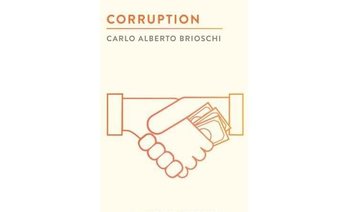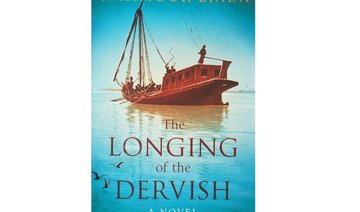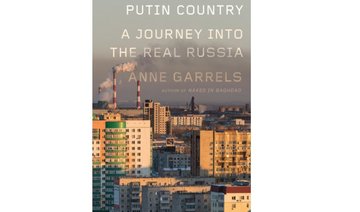When India’s economy slowed sharply in the first quarter of 2017, many believed that Narendra Modi’s currency ban of the previous year was one of the main causes. Saurabh Mukherjea, chief executive officer at Ambit Capital, summarized how the market reacted by saying: “Demonetization was the economic equivalent of a heart attack… The economy had a mild headache and we are now over it.”
India remains the fastest-growing major economy in the world despite the shock of demonetization, the strengthening of oil prices and a range of uncertainties at home and abroad.
Joining an extensive list of books on India, “Turn of the Tortoise: The Challenge and Promise of India’s Future” gives us a commanding view of the intricacies of the Indian economy. The author, T. N. Ninan, is the chairman of Business Standard, India’s second-largest business daily, and one of India’s most respected economic editors.
Ninan tackles the issue of India’s size and sets the record straight. India’s size only tells one side of the story. Even in the 1870s, when India was bigger than Britain, it suffered from a conspicuous absence of development and lacked industrial and technological capabilities.
Today, having gained its independence, India wants a place in the sun. During the 2008 financial crisis, India was the 12th largest economy in the world and it jumped up to seventh place in 2015, overtaking Spain, Canada and Italy.
India has maintained an annual GDP growth of seven percent or more for 25 years and this is beginning to pay off. Just like “The Hare and the Tortoise,” the famous fable by Jean de La Fontaine, India seems to be winning the race in slow and steady fashion. India, which was seen as a tortoise because of its slower growth, is catching up fast with hares such as China, Vietnam and Malaysia. These Asian giants have seen their economies weaken as they reached a certain level of production and prosperity. Within the next five years, India is poised to be the third-largest contributor to world growth after China and the US.
The author focuses on the poor standards of governance that make India a difficult place to do business. Ninan quotes a chief executive of one of America’s largest companies whose comment helps us understand what works and what does not in India. He noticed that his company had succeeded every time it bet on the Indian people, less so but with good success when it bet on the Indian market and least of all when it bet on Indian policymaking and policymakers.
India’s economic success is largely due to the presence of educated manpower, which has provided quality engineers, lawyers, accountants, managers and call center staff for international companies. However, none of this could have been possible without the input of exceptional businessmen who are listed on the Fortune 500 list. They have changed the game and have taken Indian entrepreneurship to the next level.
Indian policymakers have tried hard to revive the country’s manufacturing sector. Modi, in particular, showed strong resolve when he created the “Made in India” initiative to achieve that goal. India, however, is still seen as a difficult country to set up a business in and the government is planning to reduce paperwork and digitalize the whole process in a bid to counter that. However, even if such measures are implemented, India is still home to a poor infrastructure, its workers are not as productive as the Chinese and dealing with the authorities is seen as a trying experience, according to the book.
This book’s main argument is that India should not copy China and compete solely on the strength of lower wages. “Rather than studying China, which has led to failed copycat experiments like special economic zones, it should be more fruitful to study India (and) how to change its operating environment, then look at what kind of manufacturing has worked in this country and what has not. Following from that, a strategy can (be planned) to back the horses that can run, not the donkeys that can’t,” Ninan wrote.
Wages and workers
Many studies highlight the notion that Indian workers are not as productive as their counterparts in China or Korea. Ninan gives us the example of Dilip Kapur, the founder of a successful leather products company whose workers could not produce more than nine handbags per day versus 12 per day in a Chinese factory.
Successful manufacturing plants should not only be based on cost and productivity as they also require other factors, such as the availability of raw materials or a large home market.
India, according to Ninan, must not focus solely on intensive manufacturing. It has an abundant, qualified and well-educated labor force that can work in very specialized sectors such as spatial research, software services and in the pharmaceutical industry where it has been remarkably successful in producing generic drugs. For all these reasons, an increasing number of international companies are establishing key research and development centers in India.
The author also reminds readers of the untapped potential wealth of Indian agriculture. Farming productivity can be substantially increased through crop diversification into higher-value products such as fruit and vegetables and making use of better technology and farming practices. “The truth is that India can hugely increase the productivity levels on its farms, continue to comfortably feed itself, become an export powerhouse if it wishes to and, in the process, raise both employment and income levels substantially in the rural areas while also freeing land for non-agricultural use,” Ninan wrote.
Some parts of rural India are changing fast. Land prices are going up and a number of farmers have become rich by selling their land to real estate developers. However, farming remains difficult in other parts of the country and despite a rise in agricultural growth, the yield per hectare of many crops is only half of what it is in other countries.
While some laborers increase the ranks of a destitute rural proletariat, others decide to move into cities where they live in slums. Life in slums is not what it used to be and the way of life has changed drastically. Half of the homes in slums have tap water while access to electricity and cooking gas is near universal, according to the book.
Although change is needed, India is firmly on course to be the world’s second-largest economy, behind China, by 2040. One has to keep in mind that half of the Indian population is under the age of 28, providing a fast-expanding, educated and English-speaking workforce. If the economy continues to grow at an annual rate of seven percent over the next decade, it is expected that by 2025 up to 700 million Indians will be part of the middle class.
Despite internal tensions and conflicts, Ninan confidently concludes that “the reassuring facts in a broadly hopeful scenario are that the directions are overwhelmingly positive and that the system, as a whole, has a bedrock of stability that is not affected by the surface turmoil.”
Book Review: Does slow and steady win the race in India?
Book Review: Does slow and steady win the race in India?

What We Are Reading Today: ‘On the Art and Craft of Doing Science’

Author: Kenneth Catania
Like any creative endeavor, science can be a messy and chaotic affair.
“On the Art and Craft of Doing Science” shares the creative process of an innovative and accomplished scientist, taking readers behind the scenes of some of his most pioneering investigations and explaining why the practice of science, far from being an orderly exercise in pure logic, is a form of creative expression like any other art.
Kenneth Catania begins by discussing how ideas set the stage for scientific breakthroughs and goes on to describe ways to approach experimental design.
What We Are Reading Today: ‘Fuji: A Mountain in the Making’

- It has been both a totem of national unity and a flashpoint for economic and political disputes
Author: ANDREW W. BERNSTEIN
Mount Fuji is everywhere recognized as a wonder of nature and enduring symbol of Japan.
Yet behind the picture-postcard image is a history filled with conflict and upheaval. Violent eruptions across the centuries wrought havoc and instilled fear.
It has been both a totem of national unity and a flashpoint for economic and political disputes.
And while its soaring majesty has inspired countless works of literature and art, the foot of the mountain is home to military training grounds and polluting industries.
What We Are Reading Today: ‘The Aquarium’

- Hemon’s writing grapples with displacement and identity, weaving together fiction, memoir, and history
Aleksandar Hemon’s 2011 essay “The Aquarium” is an exploration of parental love, grief, and the isolating toll of confronting a child’s mortality. The essay was first published in The New Yorker and later appeared in “The Book of My Lives” in 2013.
Written with unflinching honesty, the piece chronicles Hemon’s experience navigating his infant daughter Isabel’s diagnosis of a rare brain tumor and the family’s agonizing journey through surgeries, chemotherapy, and loss.
Hemon juxtaposes the clinical detachment of medical jargon — “external ventricular drain,” “stem-cell recovery” — with visceral snapshots: Isabel’s breath on his chest, her laughter amid IV drips, her small hand gripping his finger.
At the heart of the essay lies the metaphor of an aquarium where the family exists in a suffocating bubble, visible to the outside world but severed from its rhythms.
Central to the narrative is Hemon’s elder daughter Ella, who processes her sister’s illness through an imaginary brother, Mingus.
Stylistically, Hemon oscillates between reporter-like precision and raw vulnerability. He rejects platitudes about suffering’s “ennobling” nature, writing: “Isabel’s suffering and death did nothing for her, or us, or the world.”
The essay’s power lies in its refusal to soften despair, instead confronting the “indelible absence” grief leaves behind.
Hemon’s writing grapples with displacement and identity, weaving together fiction, memoir, and history. A MacArthur Genius Grant recipient, he doesn’t just tell stories; he uses language to find pockets of hope in shattered lives.
Think of him as a guide through the chaos of modern exile — equal parts poet and provocateur.
What We Are Reading Today: Human Forms

- In “Human Forms,” Ian Duncan reorients our understanding of the novel’s formation during its cultural ascendancy
Author: Ian Duncan
The 120 years between Henry Fielding’s Tom Jones (1749) and George Eliot’s Middlemarch (1871) marked both the rise of the novel and the shift from the presumption of a stable, universal human nature to one that changes over time.
In “Human Forms,” Ian Duncan reorients our understanding of the novel’s formation during its cultural ascendancy, arguing that fiction produced new knowledge in a period characterized by the interplay between literary and scientific discourses, even as the two were separating into distinct domains.
What We Are Reading Today: Utopianism for a Dying Planet

- The utopian tradition, which has been critical of conspicuous consumption and luxurious indulgence, might light a path to a society that emphasizes equality, sociability, and sustainability
Author: Gregory Claeys
In the face of Earth’s environmental breakdown, it is clear that technological innovation alone won’t save our planet. A more radical approach is required, one that involves profound changes in individual and collective behavior.
“Utopianism for a Dying Planet” examines the ways the expansive history of utopian thought, from its origins in ancient Sparta and ideas of the Golden Age through to today’s thinkers, can offer moral and imaginative guidance in the face of catastrophe.
The utopian tradition, which has been critical of conspicuous consumption and luxurious indulgence, might light a path to a society that emphasizes equality, sociability, and sustainability.
Gregory Claeys unfolds his argument through a wide-ranging consideration of utopian literature, social theory, and intentional communities. He defends a realist definition of utopia, focusing on ideas of sociability and belonging as central to utopian narratives.


















